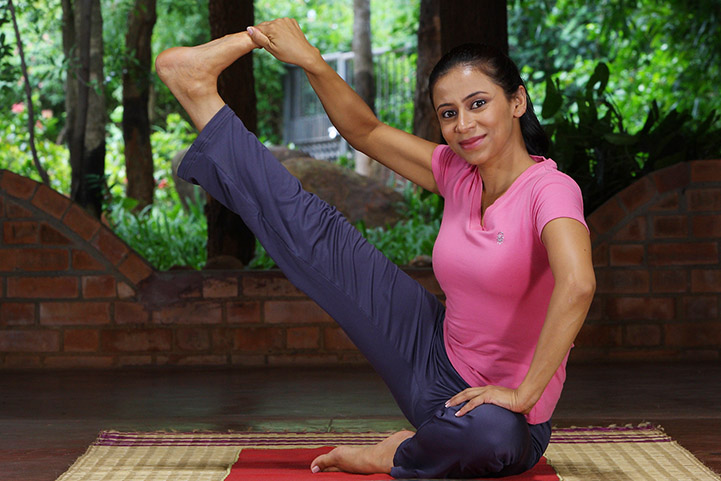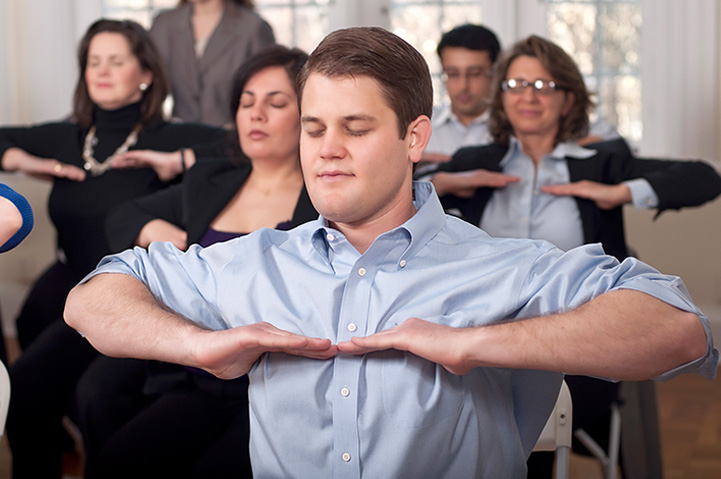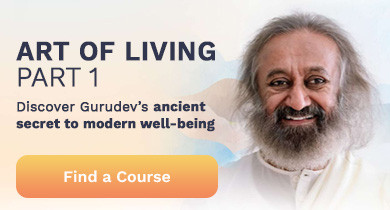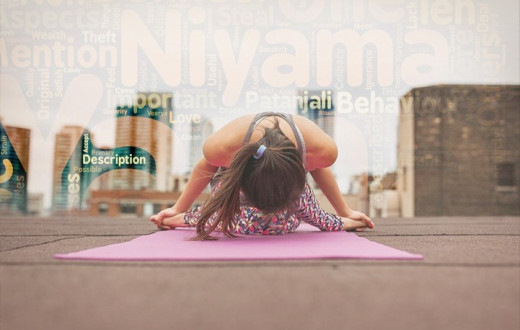Happiness is important to everyone. If you ask any person on the street what their goals are, they will likely say that their ultimate goal is to be happy. "The pursuit of happiness lies at the core of human endeavours,” said UN Secretary-General Ban Ki-moon in 2013. We seem hardwired to pursue happiness.
The bittersweet truth of the pursuit of happiness
The great American novelist Nathaniel Hawthorne warned years ago, “Happiness in this world, when it comes, comes incidentally, make it the object of pursuit, and it leads us a wild-goose chase, and is never attained.”
There are tons of articles and blogs on the internet that have listed hundreds of ways and ideas to be happy. These certainly have some value, but somewhere along the line, we start to believe that happiness is something external and it comes by doing these tasks. But the happiness that we experience by going through the motions of these tasks is transient, and if we stop doing those activities, we are back to square one.
Happiness seems to be an elusive state. Philosophers, theologians, psychologists, even economists have long sought to define it. Happiness is believed to be something to pursue and achieve, something that can be tracked down or even purchased. You might believe that happiness is only attainable when you’ve reached a certain weight, or once you have a certain amount of money in the bank. It’s tempting to assume that events — like getting a dream job or an Ivy League acceptance letter or — will permanently bring the happiness we seek. People assume that major changes like moving to California or getting married or getting a big raise will make them permanently better off. But I am sure your experience says that they don’t. Most of us have realized the bittersweet truth that huge goals may take years of hard work to meet, and though the striving itself may be worthwhile, the happiness they create dissipates after just a few months.
So what is true happiness?
March 20th is International Day of Happiness, as declared by the United Nations. They have set this goal of #TENBILLIONHAPPY; Happiness Day. Every Day. For All of Humanity, by 2050.
This is something very interesting and inspiring. As the day is approaching, it is definitely the best time to look into this question and find some answers that can give us true and lasting progress in the pursuit of happiness.
 The path to happiness according to yoga
The path to happiness according to yoga
I have been practicing and teaching yoga and meditation for more than two decades now. According to yoga sutras (aphorisms) written by Maharishi Patanjali several thousands years ago, santosha, which means contentment, is one of the first rules or a form of self-discipline of yoga. This indicates that happiness is a skill, habit and practice. The practice of santosha removes us from the wild-goose chase and rests us in a gentle hammock of joy and peace.
According to William Arthur Ward, one of America's most quoted writers of inspirational maxims, “Happiness is an inside job,” and this is a great thing to remember as a yoga practitioner. When we forget this and look for validation externally—in relationships, career success, or material goods —ultimately we end up disappointed.
Look what the great scientist Albert Einstein had to say about Happiness.
Yoga is the way to the calm, peaceful and modest life. Yoga teaches us that happiness is always available to us, no matter what our circumstances. To tap into it, we have to look within. Again, in the words of Nathaniel Hawthorne, “Happiness is a butterfly, which, when pursued, is always just beyond your grasp, but which, if you will sit down quietly, may alight upon you.” Yoga gives us that space to sit quietly and to look within and find happiness there.
 Are you ready to take a U-turn?
Are you ready to take a U-turn?
The explanation of Happiness given by Gurudev Sri Sri Ravi Shankar, a globally revered yogi who is considered the “Guru of Joy” by millions across the world, and who is the mastermind behind the world renowned Happiness Program, is simple, yet groundbreaking.
According to him, happiness is a factor that we have to carefully pursue. Unconsciously, we all are happy, but somewhere in the pursuit of happiness, we get stuck and miss the goal. Wake up and see the present, and you will find that happiness is there; unconditional happiness. Only then are you happy, and not dependant on others for your happiness. Happiness depends only on your mind.
When the mind is free of past impressions and future cravings, happiness is there. Don’t postpone your happiness until some perfect future date. Be happy now, and tomorrow will take care of itself. In the world, people are either dreaming of happiness or remembering happiness. That is either being in the past or the future. But happiness is that which is in the present. I see happiness as our very nature. Peace and happiness is what we are made up of! The quest is the quest towards the Self.
I understood that once the Self has been recognized as it truly is—ever-present, infinite, and full—we no longer need to project our happiness onto objects and experiences. We no longer need to pursue happiness; we know our nature is happiness and we can rest in that recognition.
When I heard this for the very first time several years ago, something shifted within me. And it seemed that suddenly my life took U-turn. Until then I was looking for happiness somewhere outside of myself, and was always dependent on this or that in order to feel happy. This journey had already become so frustrating, as the happiness gained through changing experiences and actions was so fleeting in nature. This recognition that our true nature is happiness itself was so empowering. I felt as if I’d found the master key that would unlock the reservoir of lasting happiness and real freedom within me.
 Unlocking the gates to lasting happiness
Unlocking the gates to lasting happiness
It’s one thing to understand that happiness comes from within and that it is your very nature, and another thing to really know it and live it. How do we bring the mind to the present moment? How do we really realize that happiness is our very nature? How do we get in touch with the core of our nature? How do we bring this conceptual understanding to an experiential realization? How can we become steady and centered in this realization, so that unpleasant and challenging situations don’t easily shake us up?
Here my yoga practice came in very handy. Besides yoga asanas, pranayamas, the Sudarshan Kriya (taught in the Art of Living Happiness Program) and meditation has become integral part of my daily practice or sadhana for so many years now. The addition of the Sudarshan Kriya and meditation to my daily routine has taken my sadhana to an altogether different level, depth and maturity. Gradually but surely, a powerful and definite internal and external transformation has started happening in my life. I find myself more and more in a perpetual state of happiness that is beyond objects, people, situations, events, and circumstances in my life. I feel so much in control of my life. And no matter what goes outside, the inner smile and centeredness does not fade away easily. My inside remains unshakable and untouched.
I also realized that happiness is not a feeling or mood making or any state of excitement or euphoria, but it is a state of steady, palpable and undeniable inner peace that allows you to have a genuine smile on your face and confidence in your heart in the midst of real life with all of its inevitable ups and downs and twists and turns. It is a solid backdrop that constantly remains in the background of the stage on which drama of life continuously goes on.
 The secret of happiness lies in our breath
The secret of happiness lies in our breath
Ancient wisdom, supported by recent research, tells us that breath is an important element of health and happiness. The breath has proven to be an effective tool to remove stress and impurities from the system, and bring clarity and focus to the mind. It plays an essential role in how we feel physically and emotionally. Over 80% of the emotional and physical impurities in the body can be eliminated through the breath. When these impurities and stresses are removed from our body and mind, we easily connect with our true nature.
Sudarshan Kriya is a simple yet powerful rhythmic breathing technique that de-stresses and cleanses at the cellular level, and effectively draws you into a deep state of meditation that connects you to your real being.
The Art of Living Foundation celebrates International Day of Happiness
March 2020: USA Spring Tour With Gurudev Sri Sri Ravi Shankar
In a rare series of nationwide events, realized master and globally renowned humanitarian, Gurudev Sri Sri Ravi Shankar, will share profound wisdom, meditations, and techniques that shift stress, renew energy, and connect you to a lasting sense of calm and ease, right here, right now—just as you are.
Join the millions of people around the world that continue to benefit from these evidence-based, practical techniques and inspired insight shared by Gurudev Sri Sri Ravi Shankar.
Gain tools to transform your daily life and be happy exactly where you are. A unique opportunity awaits you.
View All The Event On This Tour
On this International Day of Happiness, I hope that you experience revolutionary breakthroughs in your pursuit of happiness!
By Sejal Shah, E-YRT 500 Sri Sri Yoga Teacher, YACEP, Art of Living Teacher, NYU Post Graduate Medical School approved Yoga-CME retreat facilitator, Mind-Body Wellness Writer, Homeopath





























